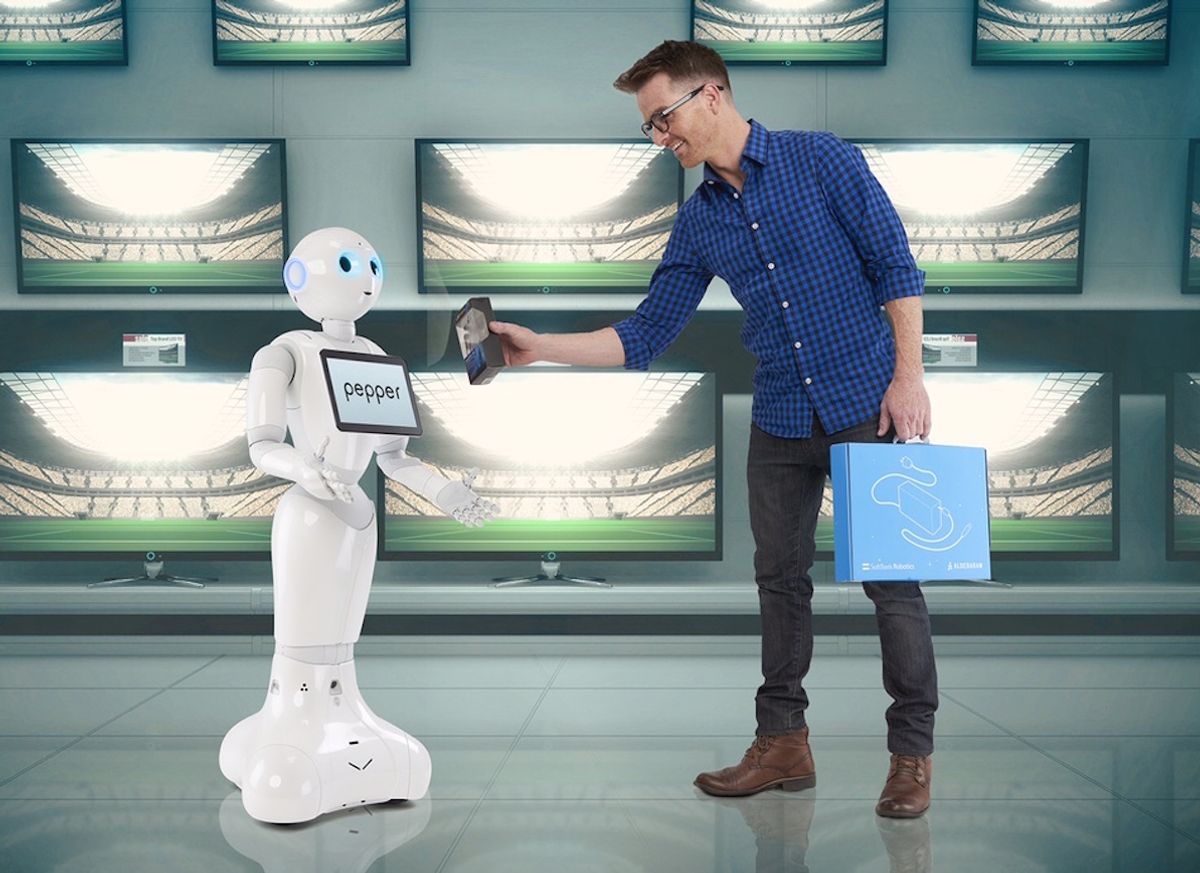Pepper is finally coming to America. Japanese telecommunications giant SoftBank said today that its chatty humanoid robot, unveiled with great fanfare by the company’s founder and CEO Masayoshi Son two years ago, is expected to debut in the North American market later this year. SoftBank also announced that a new developer portal is now available to anyone interested in creating applications for the robot. And tomorrow at Google I/O, SoftBank engineers will take the stage, along with Pepper, to introduce a tool that they hope will entice more developers to build apps for the robot: an SDK for the Android mobile operating system.

“We’re so excited to see what the development community can bring on to our platform,” Steve Carlin, vice president of marketing and business development for SoftBank Robotics America, told IEEE Spectrum, adding that “ultimately what is going to really power Pepper is the creativity of this community.” He said the company doesn’t have an official launch date or pricing details but wanted to start building momentum for Pepper’s arrival.
Carlin, who was Facebook’s global head of strategy for gaming before joining SoftBank, explained that businesses, not home users, will be the initial focus in the U.S. market. Today, a number of big retailers in Japan and Europe are using Pepper as a robotic helper to assist customers. These companies include SoftBank’s own mobile subsidiary, which has dozens of robots at its Tokyo stores, as well as businesses such as Nestlé, Nissan, and Carrefour. In Japan, Pepper is also available to individuals who want to use it at home. SoftBank said it has sold more than 7,000 units to consumers and companies.
The new developer portal will offer technical documentation on Pepper, which is capable of talking, gesticulating, and moving on wheels. The robot also has an “emotion engine” that allows it to interact with people in a more engaging way. Also available on the portal will be forums for developers to post and answer questions and a variety of tools for download, including SDKs, and a graphical development system called Choregraphe.

Developers can already use Python and C++ to build advanced apps for Pepper, but Carlin says the Android SDK is an important addition “to broaden the audience that we can bring on to the platform.” At Google I/O, Laurent Lec from SoftBank Robotics and Junichi Monma from Google will present the Android SDK’s main features and explain some of the differences between coding for a humanoid and coding for a smartphone.
In its original configuration, Pepper used an Intel-based computer and ran Naoqi, a Linux-based operating system developed by French robotics company Aldebaran, now part of SoftBank Robotics. (Naoqi was originally developed for Nao, Aldebaran’s smaller humanoid.) SoftBank said in a statement that it has “upgraded Pepper to a Google-certified Android OS and released APIs to enhance the developer experience.” Carlin explained that the “Android SDK is a layer on top of the Naoqi operating system.”
Asked how developers would be able to debug and test their apps without an actual robot, Carlin said they could use Choregraphe to test their creations on a virtual Pepper. The software can simulate not only the robot’s movements but also behaviors that involve speech and the “emotion engine.” He explained that before making the robot available on the market, SoftBank wants to make sure that it has the right infrastructure to sell and support Pepper. That’s what Carlin and his team are setting up now.
The company is currently planning to expand its existing Boston facility as well as hire 30 to 40 people for its newly opened San Francisco office. “We’re really excited about what robotics can bring [to people's lives],” Carlin said, “and it’s only going to get better from here.”
Erico Guizzo is the Director of Digital Innovation at IEEE Spectrum, and cofounder of the IEEE Robots Guide, an award-winning interactive site about robotics. He oversees the operation, integration, and new feature development for all digital properties and platforms, including the Spectrum website, newsletters, CMS, editorial workflow systems, and analytics and AI tools. An IEEE Member, he is an electrical engineer by training and has a master’s degree in science writing from MIT.



